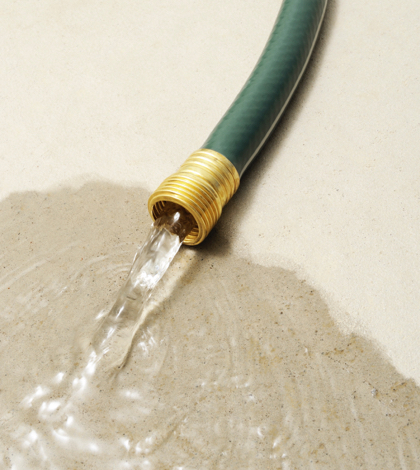The hoped-for “Awesome April” rain and snow may not yet have materialized but the “Miracle March” storms experienced in Northern California have allowed the State Water Project (SWP) to increase its estimated water deliveries to its 29 public agencies to 60 percent of requests. This in contrast to the agencies receiving only 20 percent of their requested amount in 2015. The last time the 29 contractors received their full 100 percent allocation was in 2006.
But the Department of Water Resources (DWR) cautions that California’s historic five-year drought is far from over. Historically it takes more than one wet year to mitigate the effects of multi-year droughts; it can take decades to replenish groundwater levels.
“Conservation is the surest and easiest way to stretch supplies,” said DWR Director Mark Cowin. “We all need to make the sparing, wise use of water a daily habit.”
Though Northern California experienced an El Nino winter and early spring, the San Joaquin Valley and Southern California are still experiencing a fifth year drought. Whereas the key northern reservoirs—Shasta, Oroville and Folsom—are all above their historic averages, some communities in the valley and in southern parts of the state have seen their wells depleted.
Lake Oroville in Butte County, the SWP’s principal reservoir was most recently reported at 118 percent of its historical average and holding 94 percent of its 3.5-million-acre-foot capacity. Shasta Lake, north of Redding—the Central Valley Project (CVP) largest reservoir–is holding 109 percent of its long-term average or 92 percent of its 4.5-million-acre-foot capacity. Further south, Folsom Lake near Sacramento—also a CVP reservoir—held 115 percent of its historical average. This reflects 82 percent of its 977,000-acre-foot capacity.
In December, DWR’s first SWP allocation was just 10 percent of requests. As precipitation increased allocations moved to 15 percent in late January, 30 percent in late February, and to 45 percent on March 17. The 29 public agencies that receive SWP water requested 4,172,786 acre-feet of water for 2016. With the most recent estimated allocation, contractors will receive 2,527,629 acre-feet of water.
SWP contractors supply approximately 25 million Californians and just under a million acres of irrigated farmland. SWP provides the same allocation percentages to cities and farms. Nearly all areas served by the SWP have other sources of water including streams, groundwater and local reservoirs.
Since the 100 percent allocation in 2006 water distribution declined to a low of 35 percent in 2008 and then rose to 80 percent in 2011. Water allocations then declined sharply reaching an all-time low of just five percent in 2014.
Gov. Jerry Brown declared a drought state of emergency in 2014 and appealed to Californians to take all necessary actions in response to the drought conditions. That request failed and, with the continually lack of precipitation, Gov. Brown announced mandatory statewide water conservations and a first-ever 25 percent reduction. Californians responded with unprecedented efforts and achieved nearly 24 percent savings.
 California Water News Daily Your Source For Water News in California
California Water News Daily Your Source For Water News in California


